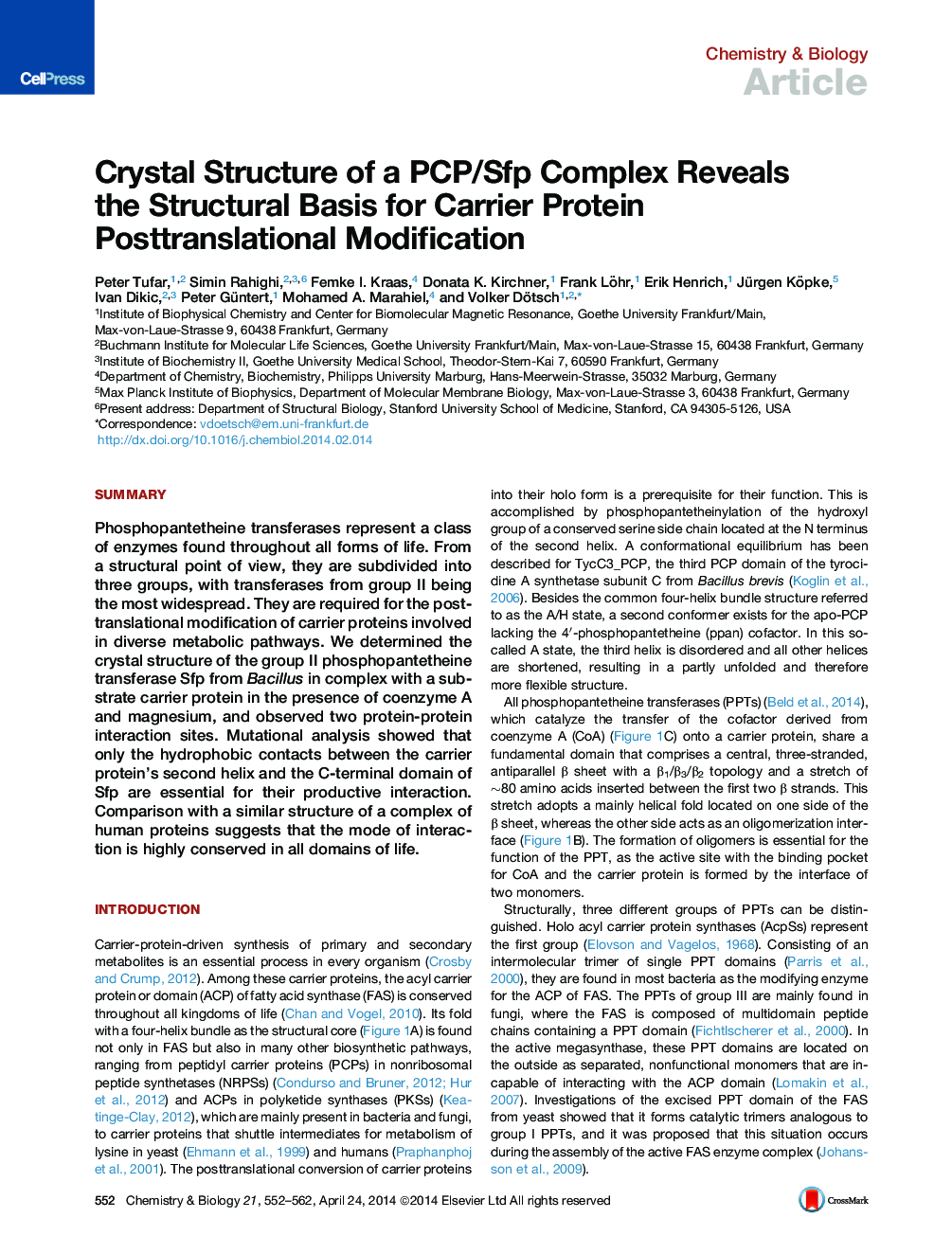| Article ID | Journal | Published Year | Pages | File Type |
|---|---|---|---|---|
| 1391101 | Chemistry & Biology | 2014 | 11 Pages |
•The structural basis for phosphopantetheine transfer is highly conserved•Recognition of carrier proteins by Sfp is based mainly on hydrophobic interactions•An intermolecular hydrogen bond enhances the promiscuity of Sfp•PCP does not change its conformation during the phosphopantetheinylation reaction
SummaryPhosphopantetheine transferases represent a class of enzymes found throughout all forms of life. From a structural point of view, they are subdivided into three groups, with transferases from group II being the most widespread. They are required for the posttranslational modification of carrier proteins involved in diverse metabolic pathways. We determined the crystal structure of the group II phosphopantetheine transferase Sfp from Bacillus in complex with a substrate carrier protein in the presence of coenzyme A and magnesium, and observed two protein-protein interaction sites. Mutational analysis showed that only the hydrophobic contacts between the carrier protein’s second helix and the C-terminal domain of Sfp are essential for their productive interaction. Comparison with a similar structure of a complex of human proteins suggests that the mode of interaction is highly conserved in all domains of life.
Graphical AbstractFigure optionsDownload full-size imageDownload high-quality image (201 K)Download as PowerPoint slide
